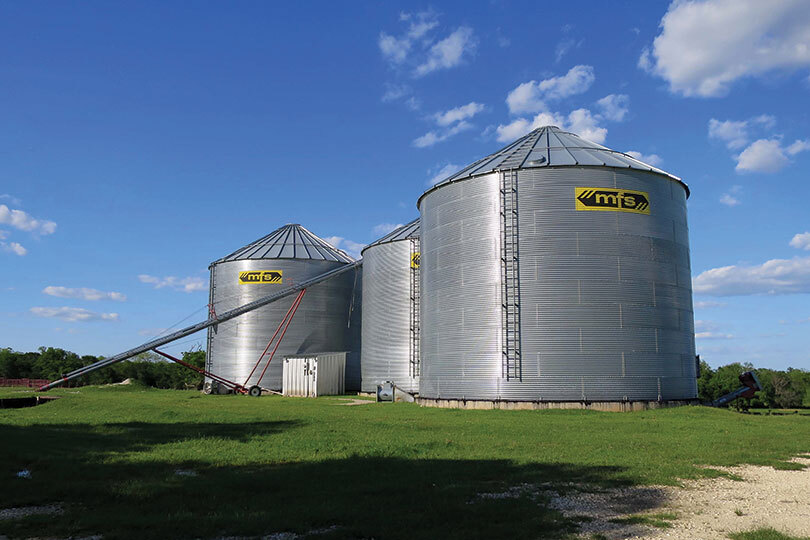By Emmy Powell
Communications Specialist
Texas farmers saw low prices and limited storage for this year’s grain harvest.
The strong production in Texas and across the U.S., along with heavy carryover stocks, continue to weigh on prices. Another record national crop is adding to the challenge facing farmers this year.
In addition, decreased export demand and high transportation costs mean little relief is in sight.
According to the U.S. Department of Agriculture’s (USDA) September Grain Stocks and September World Agricultural Supply and Demand Estimates (WASDE) report, abundant supplies and uncertain trade outlooks are expected to pressure markets and profitability well into 2026.
“Farmers are bringing in another record harvest, but storage hasn’t kept pace,” said Brant Wilbourn, Texas Farm Bureau associate director of Commodity and Regulatory Activities. “Some farmers have built more on-farm storage and others are storing the crop on the ground.”
Nationally, USDA’s WASDE projects 2025/26 corn production at a record 16.8 billion bushels and soybean production at 4.3 billion bushels. Despite strong yields, demand remains sluggish due to ongoing trade challenges. That imbalance between large crops and slower movement continues to pressure prices and basis levels across major grain states.
Texas farmers are seeing similar trends.
According to the Sept. 1 USDA Grain Stocks report, Texas had 19.96 million bushels of off-farm corn, 4.46 million bushels of sorghum (including 450,000 bushels on-farm), and 85.9 million bushels of wheat in storage—8 million on-farm and nearly 78 million off-farm. The state’s total on- and off-farm storage capacity was estimated at 780 million bushels, leaving a reported surplus of about 246 million bushels statewide.
Texas farmers and grain handlers report that some regions, particularly areas of heavy corn and sorghum production, had limited storage capacity, while other parts of the state had more availability.
“Insufficient storage space can have an effect on commodity prices,” Wilbourn said. “The increase in crop size combined with lack of storage space and slowing demand for exports will continue to put pressure on crop prices. It could also have an impact on basis, and a weakening basis would add a significant price risk to the farm sector’s bottom line.”


Leave A Comment